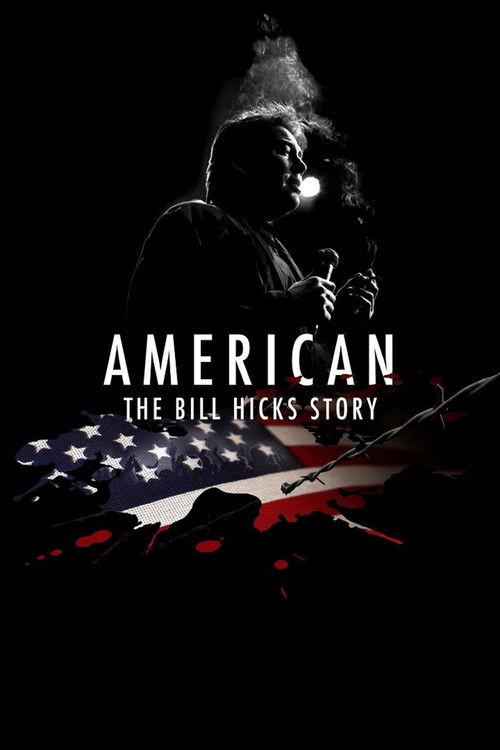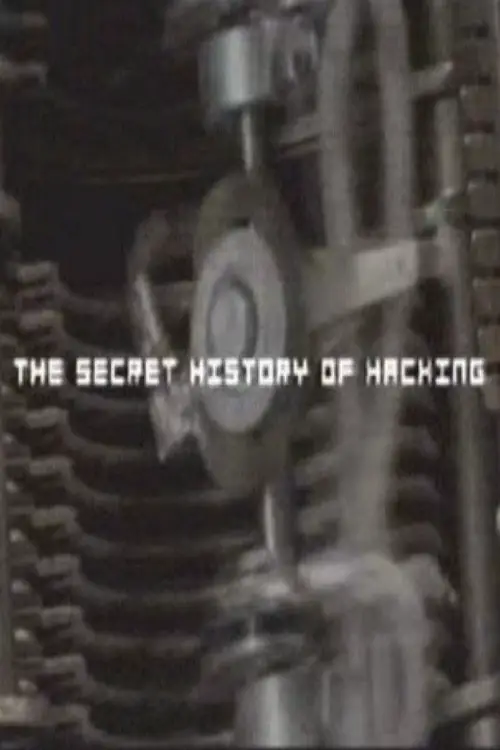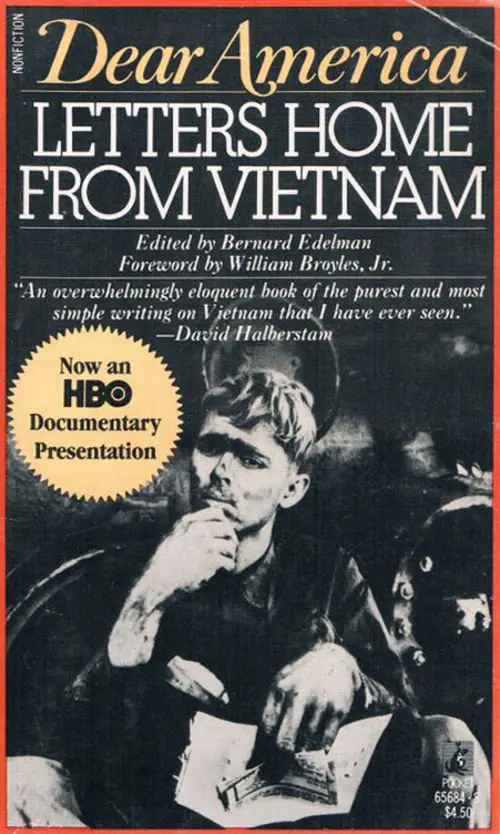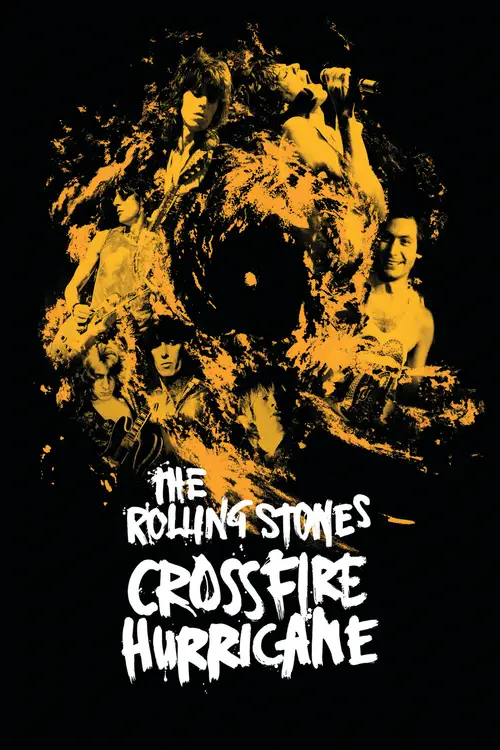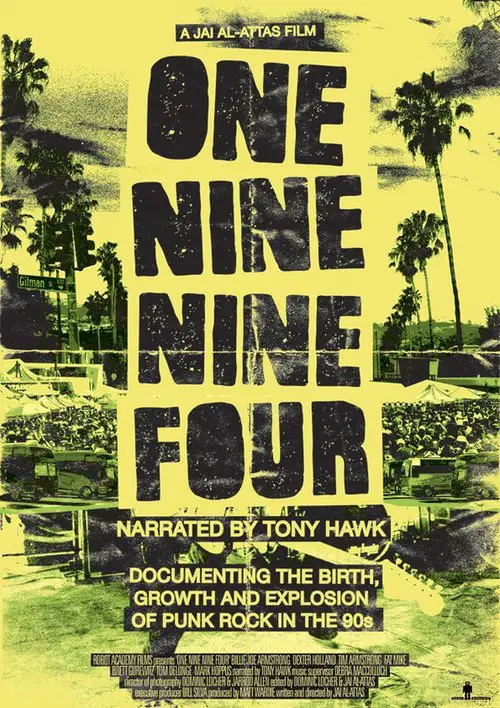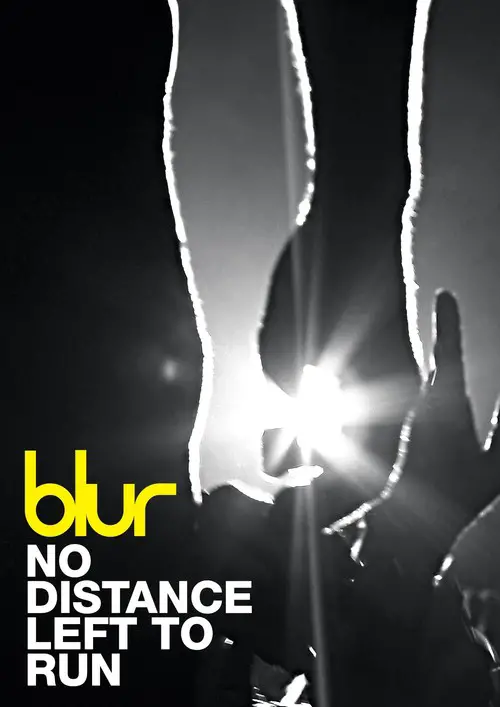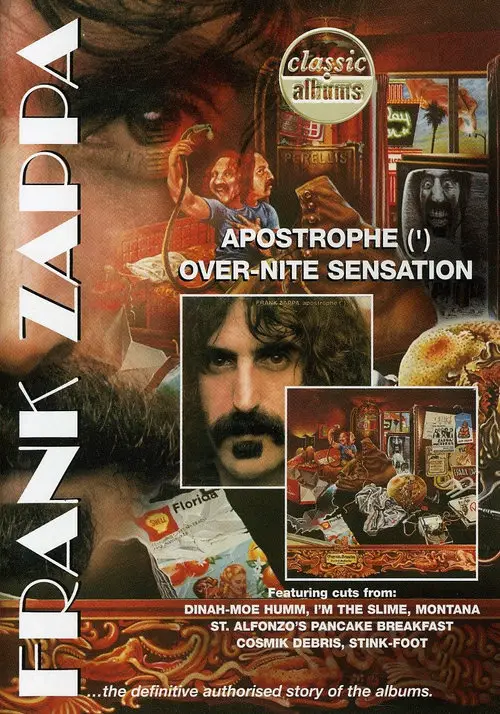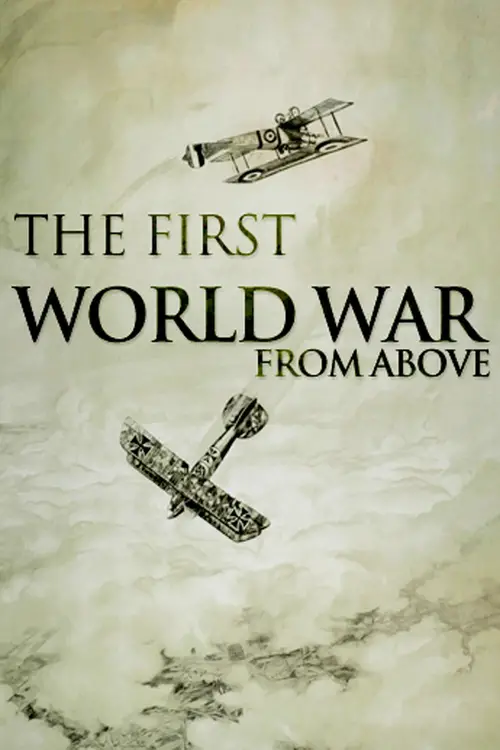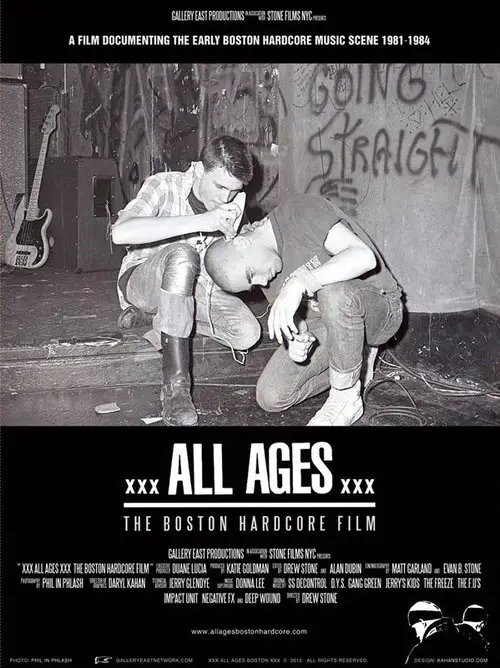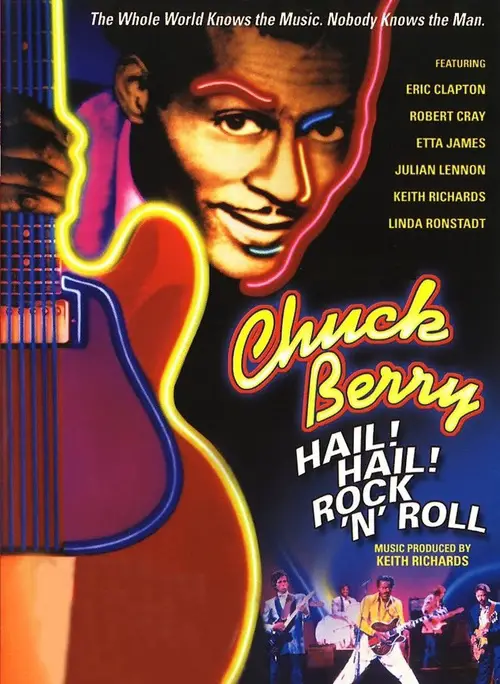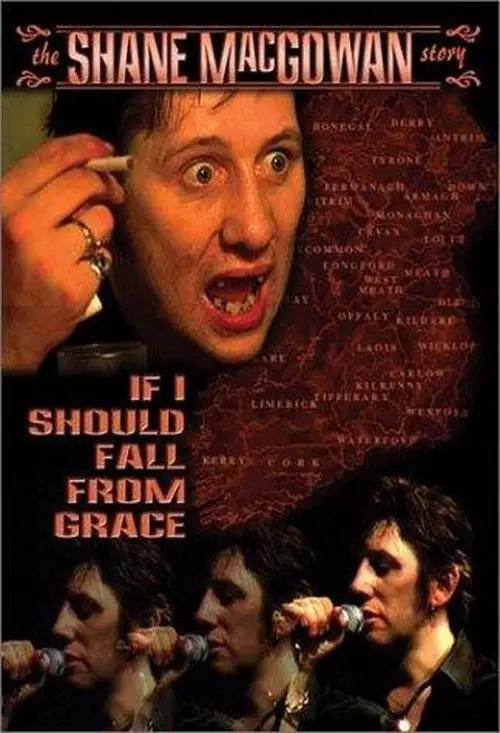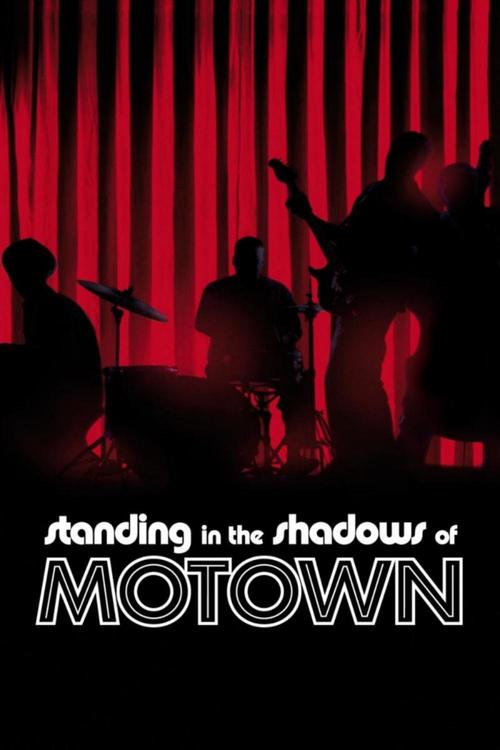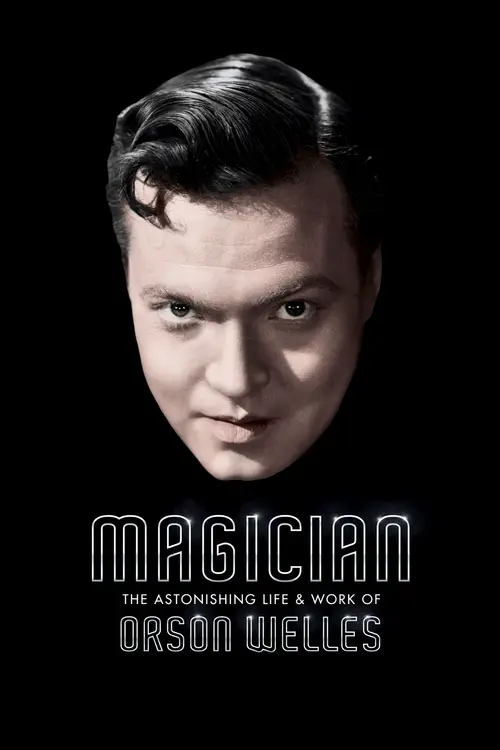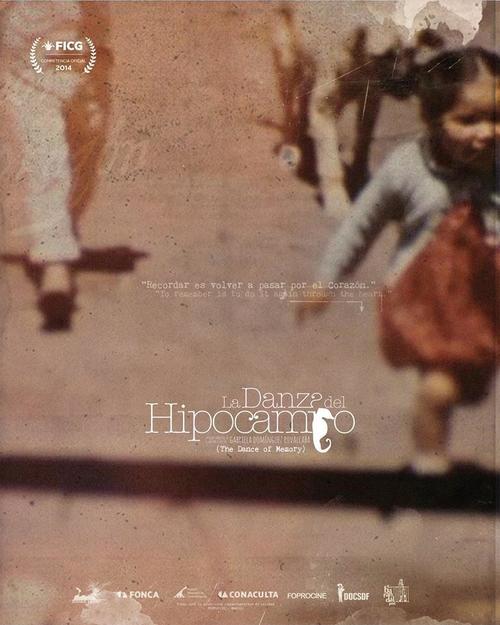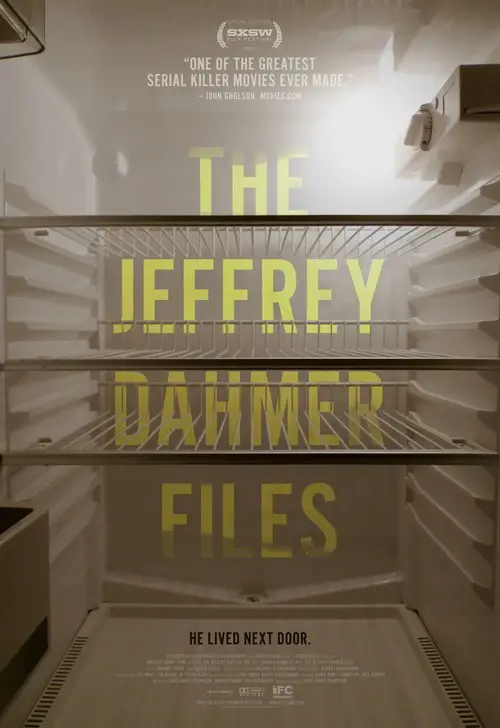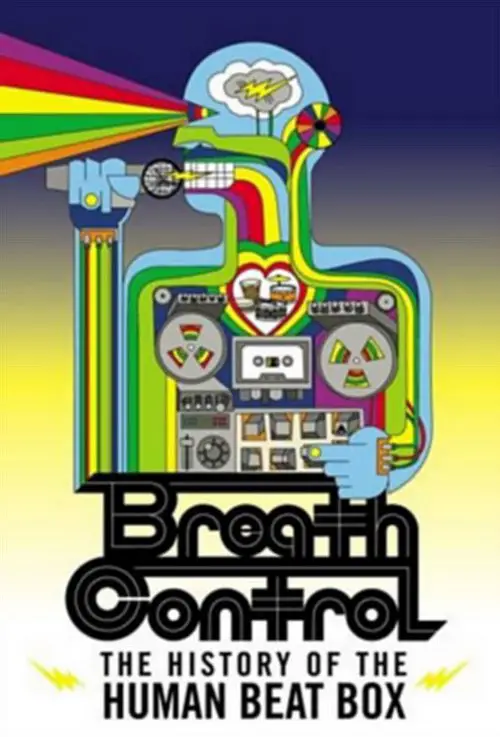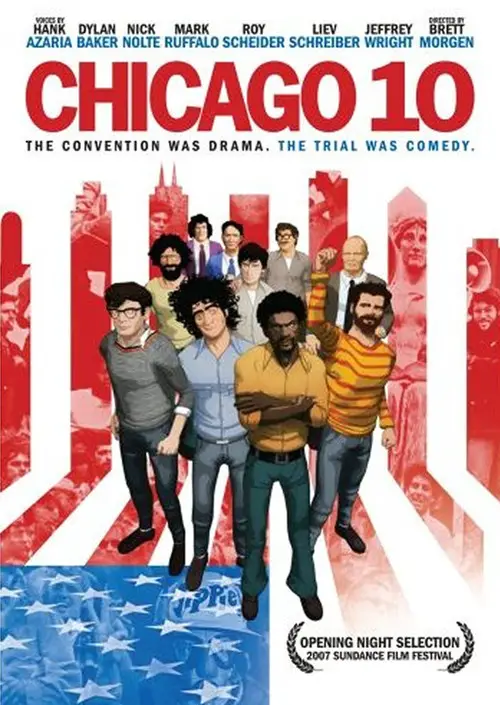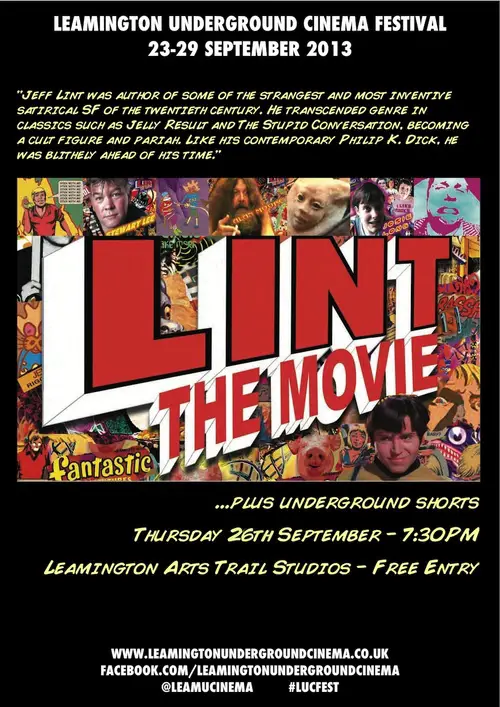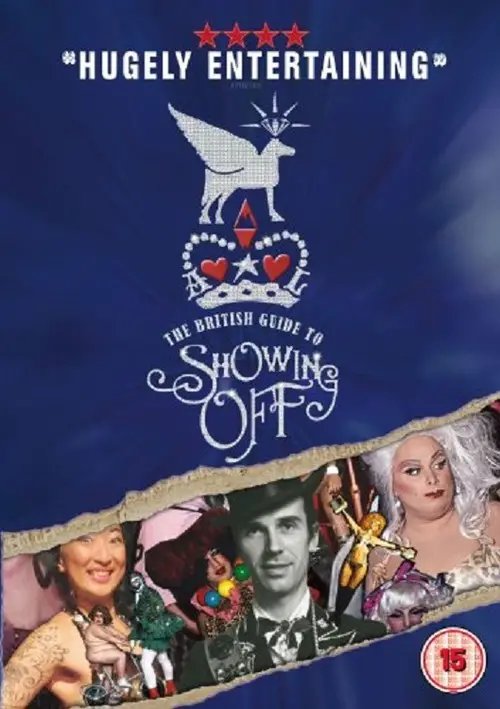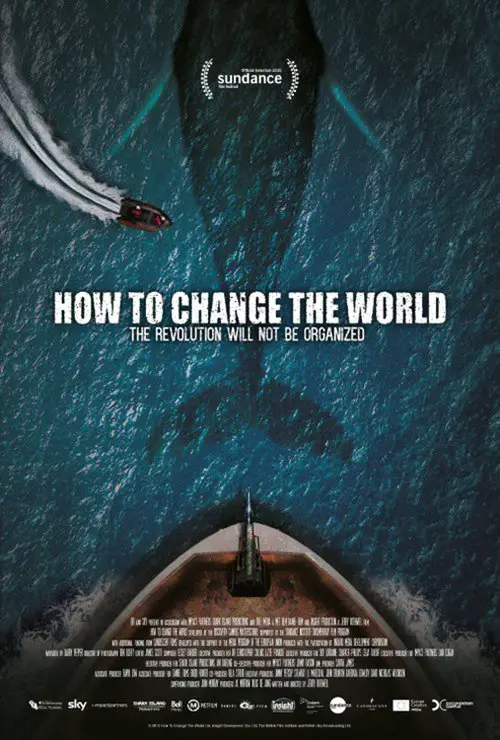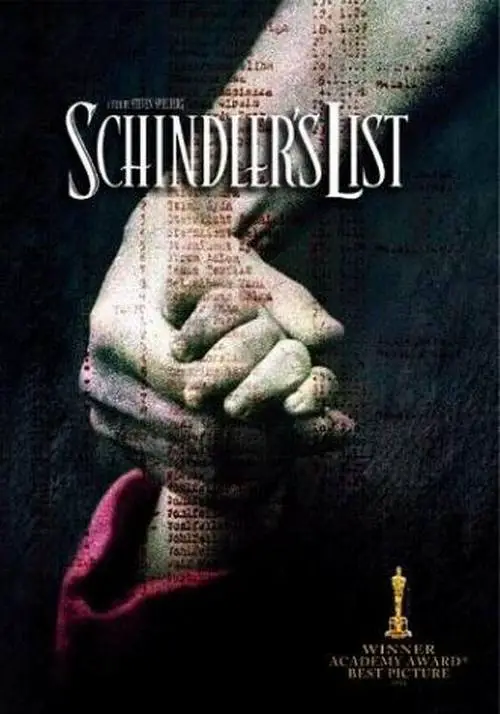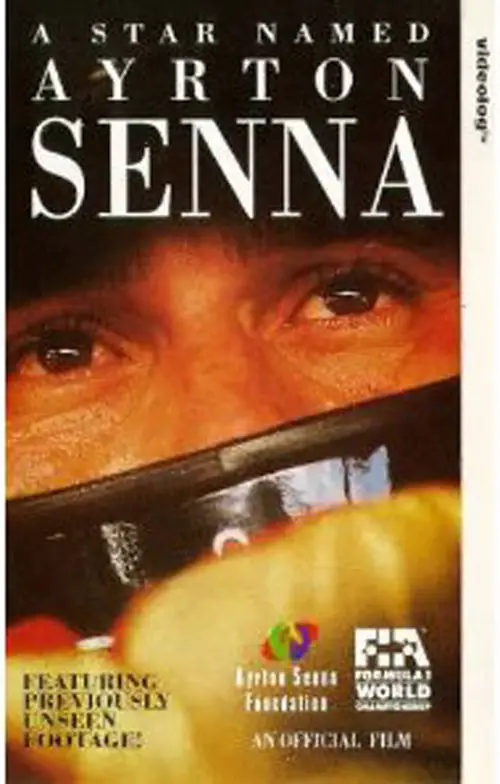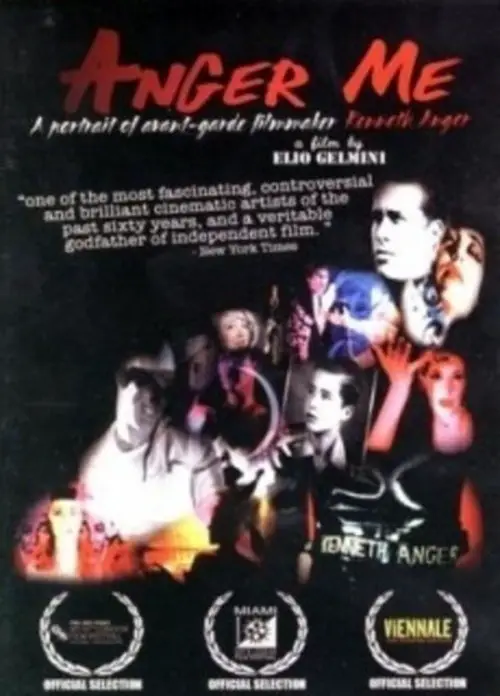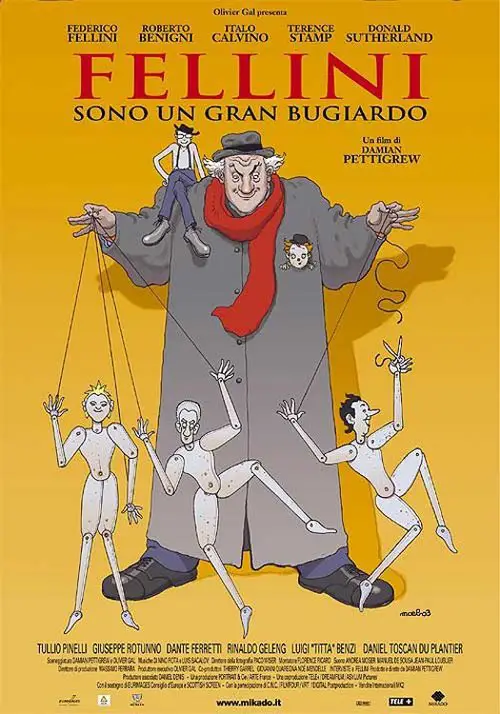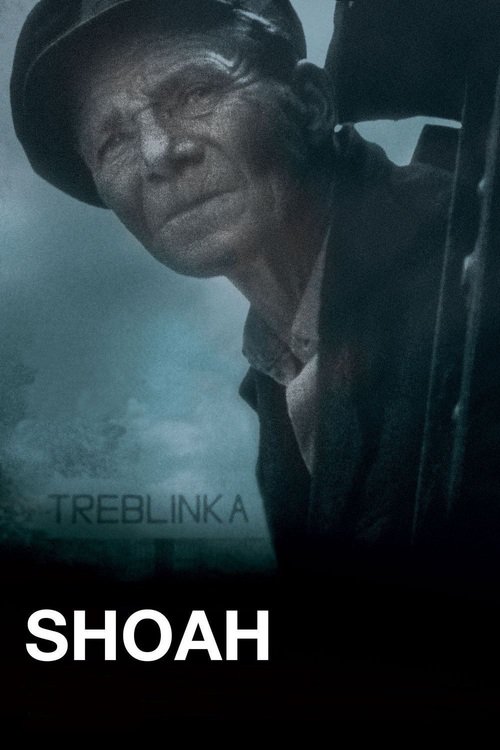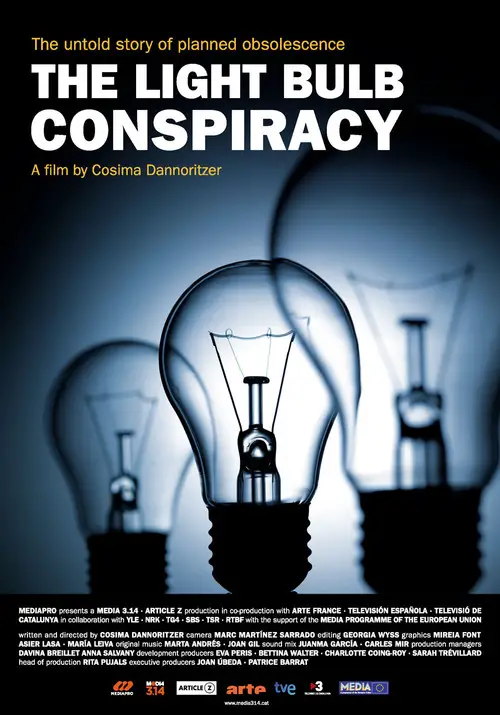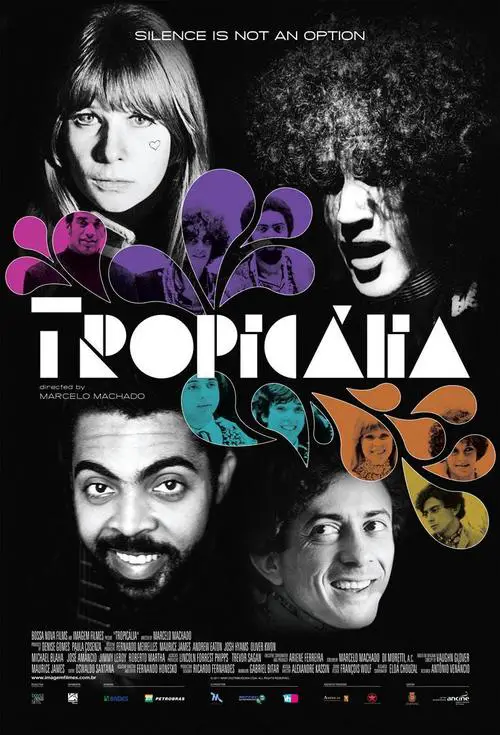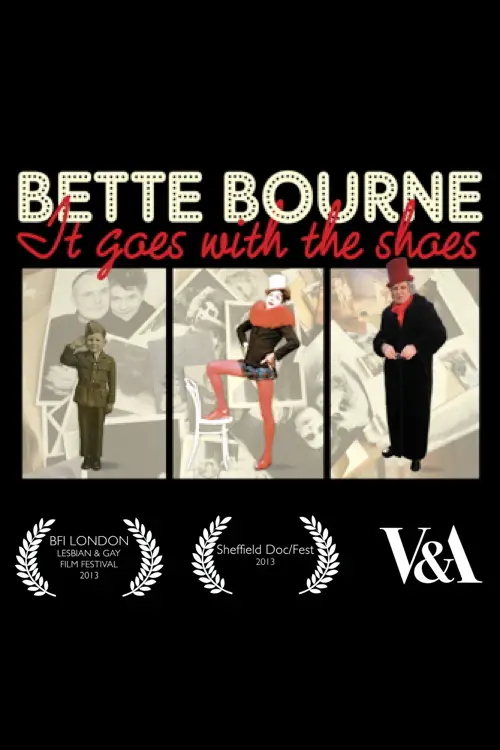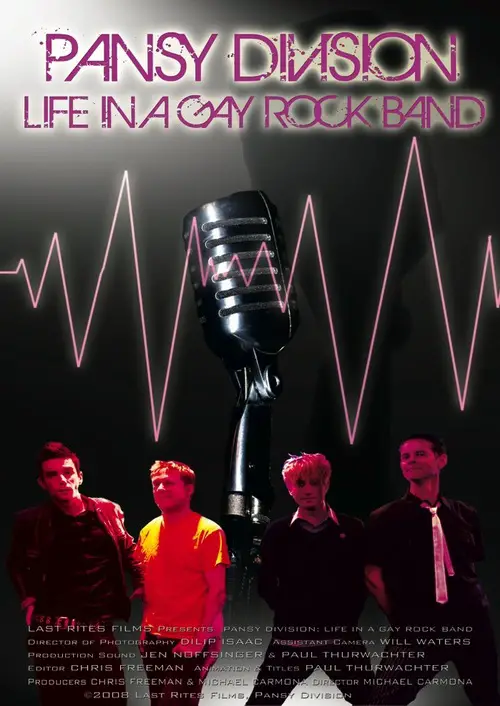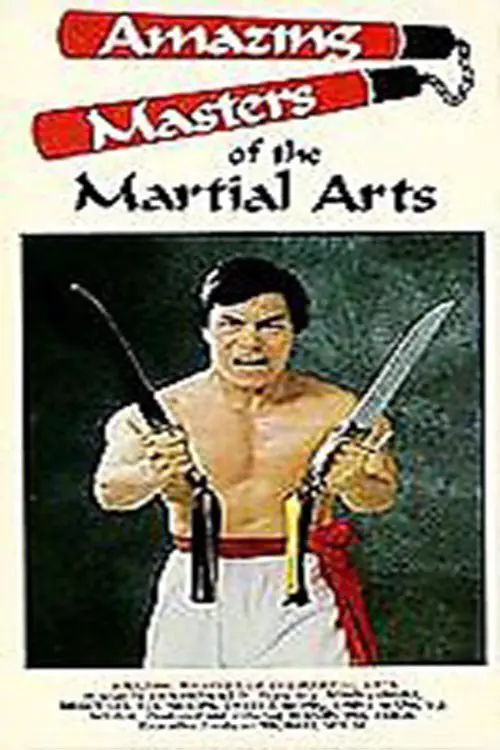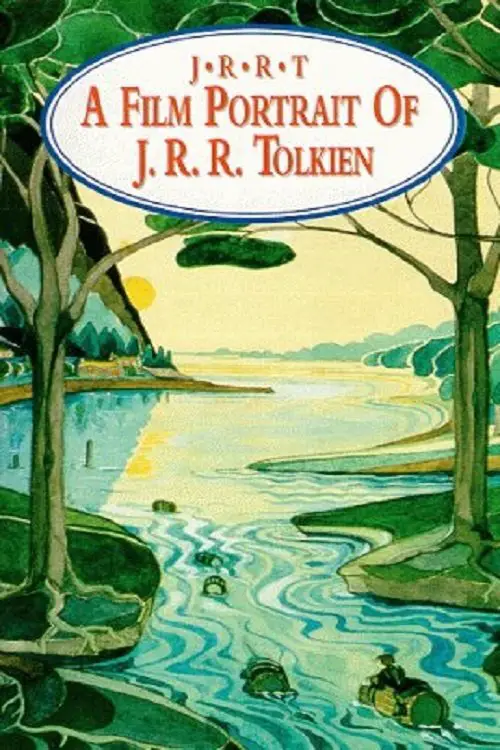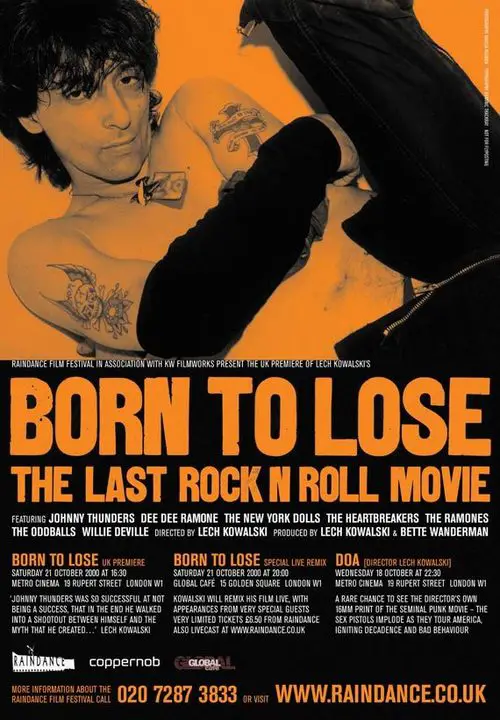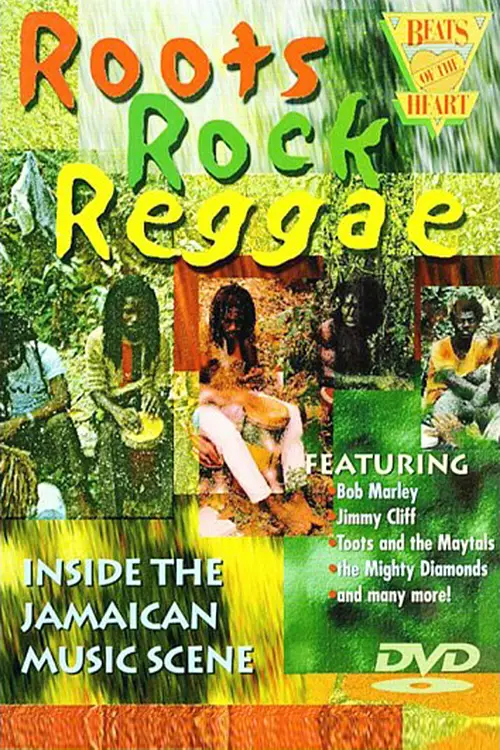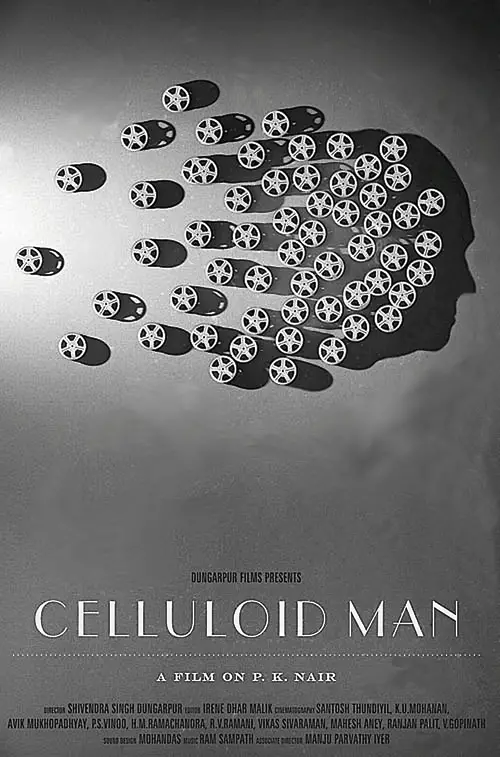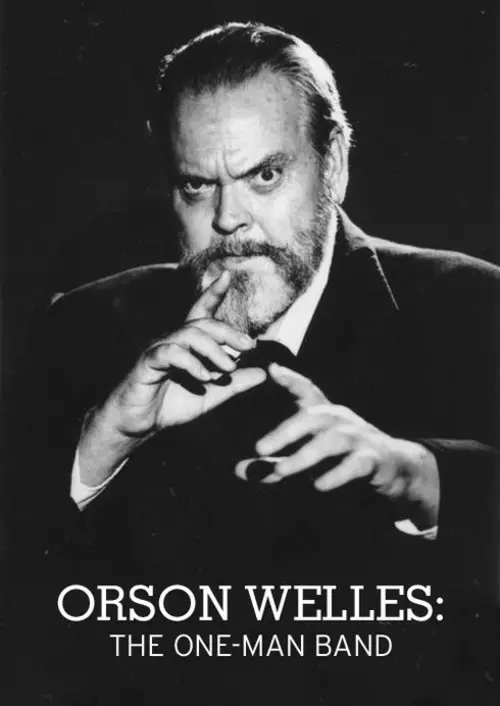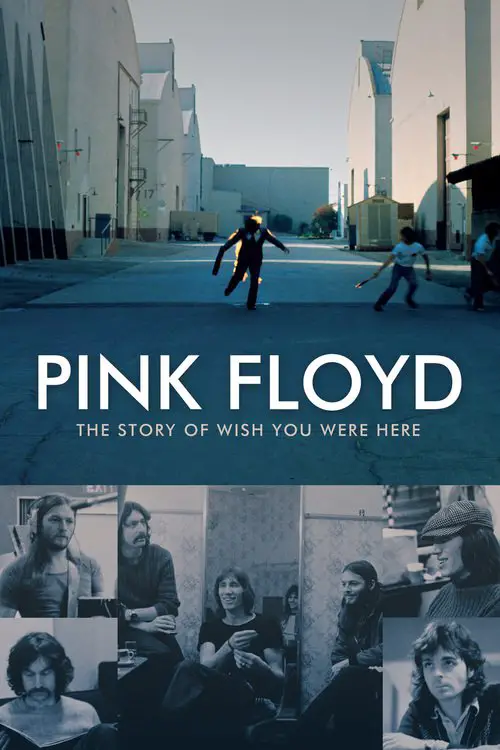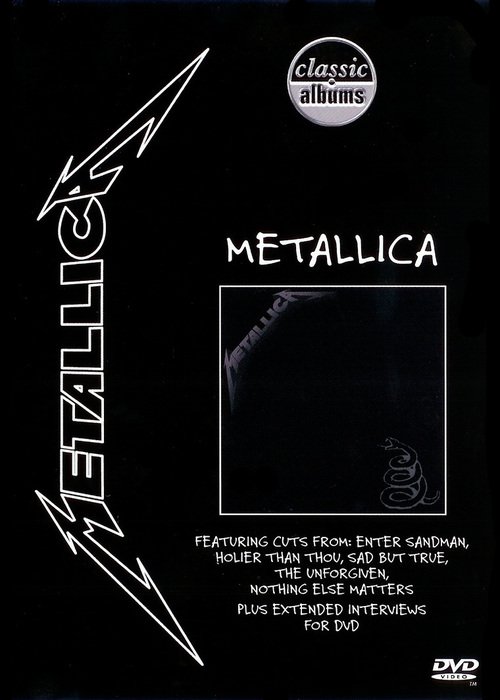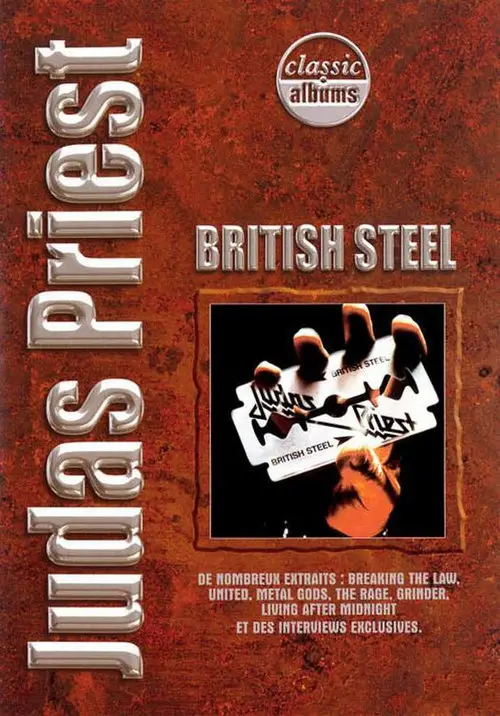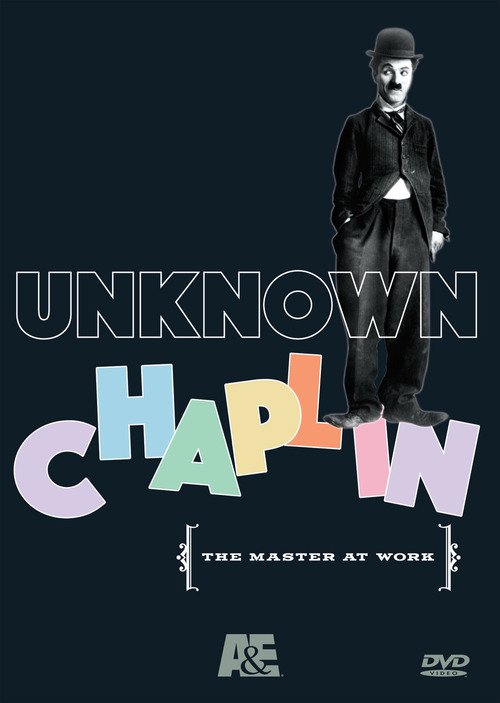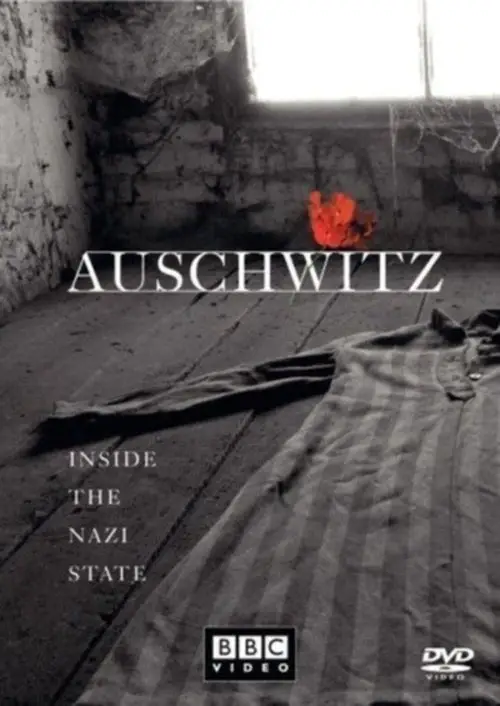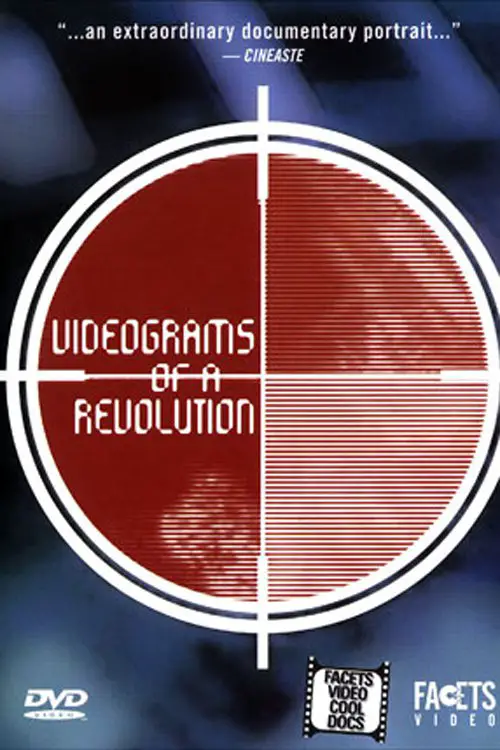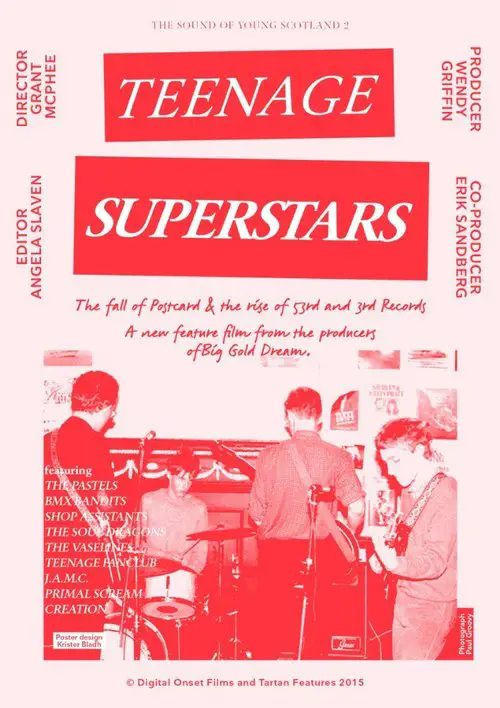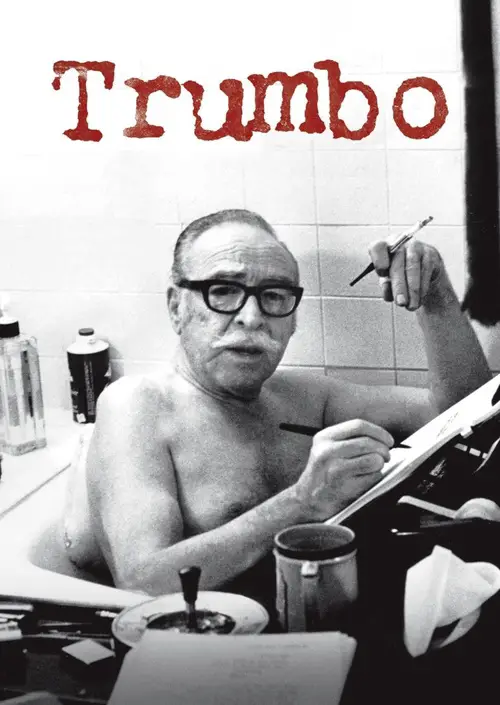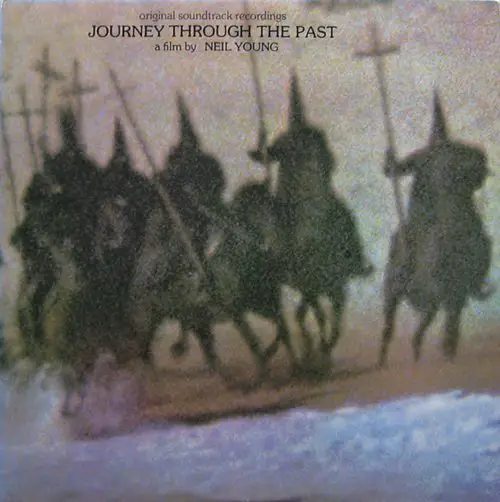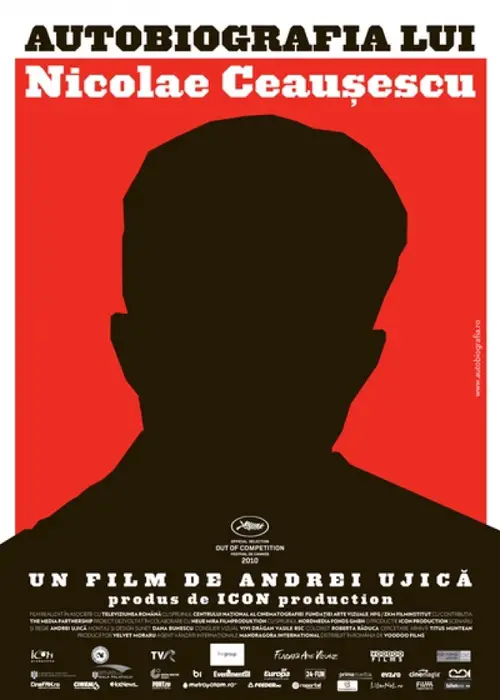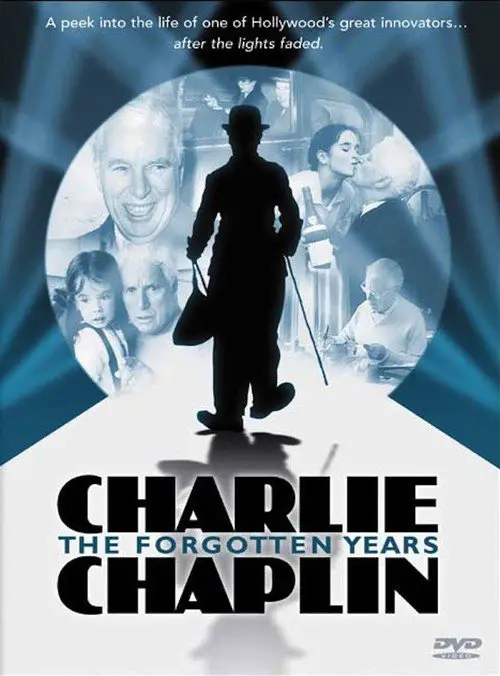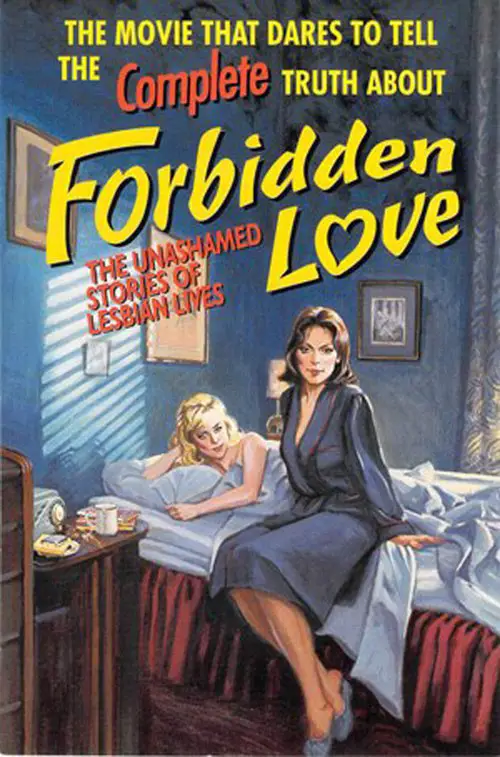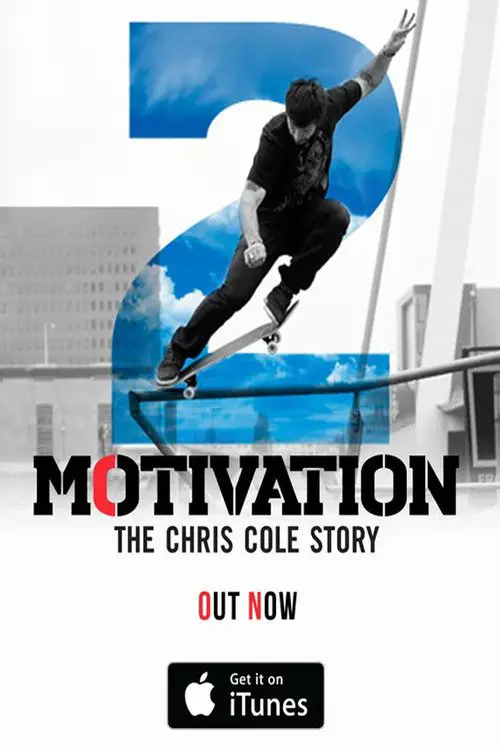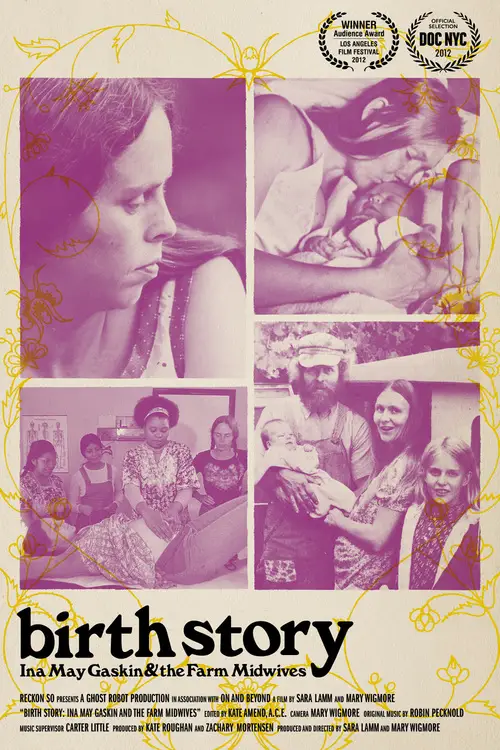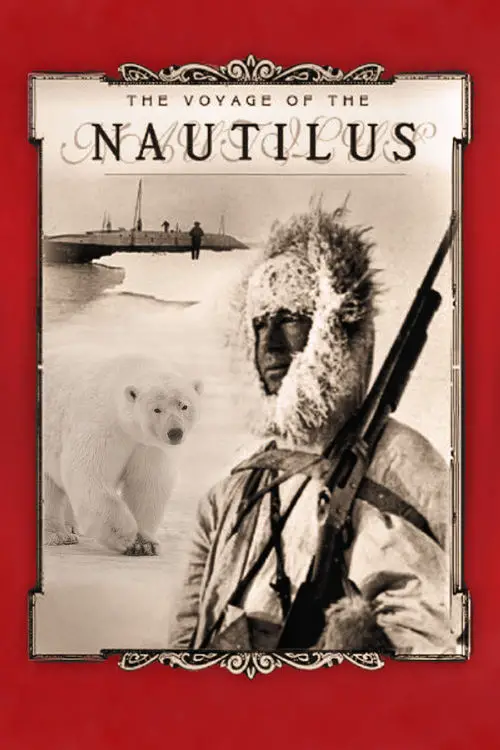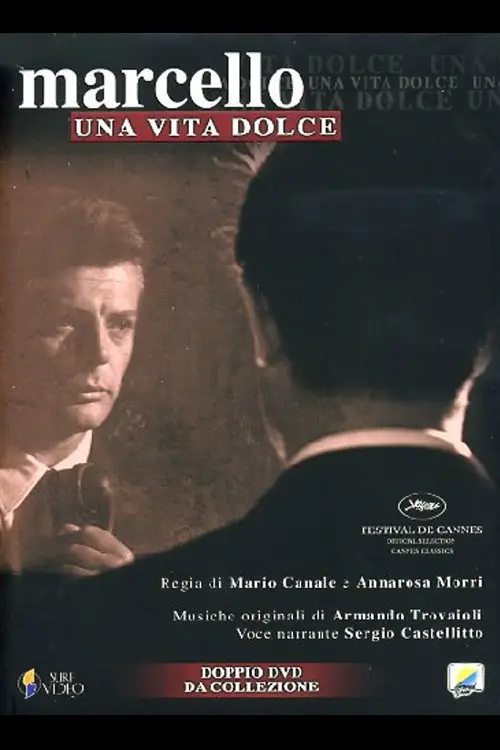La mémoire des anges (2008)
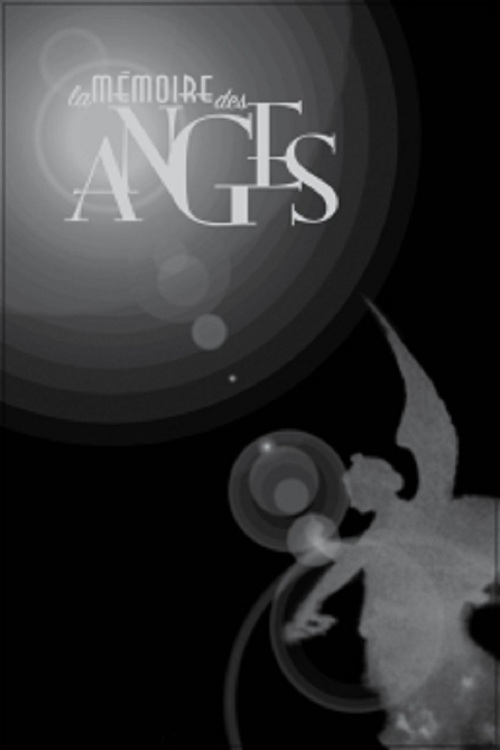
Similar movies
American: The Bill Hicks Story is a biographical documentary film on the life of comedian Bill Hicks. The film was produced by Matt Harlock and Paul Thomas, and features archival footage and interviews with family and friends, including Kevin Booth. The filmmakers used a cut-and-paste animation technique to add movement to a large collection of still pictures used to document events in Hicks' life. The film made its North American premiere at the 2010 South by Southwest Film Festival. The film was nominated for a 2010 Grierson British Documentary Award for the "Most Entertaining Documentary" category. It was also nominated for Best Graphics and Animation category in the 2011 Cinema Eye Awards. Awards won include The Dallas Film Festivals Texas Filmmaker Award, at Little Rock The Oxford American's Best Southern Film Award, and Best Documentary at the Downtown LA Film Festival. On Rotten Tomatoes, 81% of the first 47 reviews counted were rated positive.
The Secret History of Hacking is a 2001 documentary film that focuses on phreaking, computer hacking and social engineering occurring from the 1970s through to the 1990s. Archive footage concerning the subject matter and (computer generated) graphical imagery specifically created for the film are voiced over with narrative audio commentary, intermixed with commentary from people who in one way or another have been closely involved in these matters.
The Age of Stupid is the new movie from Director Franny Armstrong (McLibel) and producer John Battsek (One Day In September). Pete Postlethwaite stars as a man living alone in the devastated future world of 2055, looking at old footage from 2008 and asking: why didnât we stop climate change when we had the chance?
Feature-length documentary film featuring real-life letters written by American soldiers, sailors, airmen, and Marines during the Vietnam War to their families and friends back home. Archive footage of the war and news coverage thereof augment the first-person "narrative" by men and women who were in the war, some of whom did not survive it. Written by Jim Beaver
This film is released as part of the ongoing 50th anniversary celebration of the Rolling Stones. It tells the story of the Stones' unparalleled journey from blues obsessed teens in the early 60s to their undisputed status as rock royalty. All of the Stones have been newly interviewed and their words form the narrative arc that links together archive footage of performances, news coverage, and interviews, much of it previously unseen. Taking its title from a lyric in "Jumpin' Jack Flash," this film gives the viewer an intimate insight into exactly what it's like to be part of the Rolling Stones as they overcome denunciation, drugs, dissensions, and death to become the definitive survivors. Over a year in the making and produced with the full cooperation and involvement of the Stones, this film is and will remain the definitive story of the world's greatest rock 'n' roll band
One Nine Nine Four is a documentary film written and directed by Jai Al-Attas, "exploring the birth, growth and eventual tipping point of punk rock during the 90s" . The bulk of the film's content consists of band interviews and archive footage. The film is narrated by skateboarder Tony Hawk and features interviews and footage of various bands and figures in the punk scene including Billie Joe Armstrong of Green Day, Dexter Holland from The Offspring, Greg Graffin and Brett Gurewitz from Bad Religion, Tim Armstrong, Matt Freeman (previously of Operation Ivy) and Lars Fredriksen from Rancid, Fat Mike from NOFX as well as Mark Hoppus and Tom DeLonge from Blink-182 .
No Distance Left to Run is a documentary film about the British rock band Blur, released in cinemas on 19 January 2010. Following the band during their 2009 reunion and tour, the film also includes unseen archive footage and interviews. It was released on DVD on 15 February 2010 region free and the recording of the 2009 Hyde Park concert is included on a second disc. It aired on BBC2 on 14 March 2010. It is the band's second documentary video, following Starshaped seventeen years before in 1993.
This episode focuses on Zappa's early 70s albums, Overnight Sensation (1973) and Apostrophy (') (1974). Together they encapsulate Zappa's extraordinary musical diversity and were also the 2 most commercially successful albums that he released in his prolific career. Included are interviews, musical demonstrations, rare archive & home movie footage, plus live performances to tell the story behind the conception and recording of these groundbreaking albums. Extras include additional interviews and demonstrations not included in the broadcast version, 2 full performances from the Roxy in 1973 and Saturday Night Live in 1976, and new full live performance done specially for these Classic Albums.
The story of the Great War told from a unique new aerial perspective. Featuring two remarkable historical finds, including a piece of archive footage filmed from an airship in summer 1919, capturing the trenches and battlefields in a way that has rarely been seen before. It also features aerial photographs taken by First World War pilots - developed for the first time in over ninety years - that show not only the devastation inflicted during the fighting, but also quirks and human stories visible only from above.
A documentary film that explores the early Boston Hardcore music scene from the years 1981 through 1984. This film delves into the social and communal aspects of that particular era. The community, culture, straight edge and DIY (do it yourself) ethic of the time are all explored in the film. Never before seen archival footage, photographs, interviews and dramatizations make up the body of the film. Bands included are SS Decontrol, DYS, Gang Green, The FU's, Jerry's Kids, Negative FX, The Freeze, and more.
St. Louis, 1986. For Chuck Berry's 60th, Keith Richards assembles a pickup band of Robert Cray, Joey Spampinato, Eric Clapton, himself, and long-time Berry pianist Johnnie Johnson. Joined on stage by Etta James, Linda Ronstadt, and Julian Lennon, Berry performs his classic rock songs. His abilities as a composer, lyricist, singer, musician, and entertainer are on display and, in behind-the-scenes interviews, are discussed by Bo Diddley, Little Richard, Jerry Lee Lewis, Bruce Springstein, the Everly Brothers, Roy Orbison, and others. There's even a rarity for Berry, a rehearsal. Archival footage from the early 1950s and a duet with John Lennon round out this portrait of a master.
Music videos and archived footage supplement recent interviews in this documentary of ex-Pogues singer Shane MacGowan. We follow his life from the early days in Ireland and England, through his formation of - and later dismissal from - The Pogues, to his new band The Popes. Shane's family, friends, and former bandmates comment on the music, the rumors, and the alcohol.
In 1959, Berry Gordy Jr. gathered the best musicians from Detroit's thriving jazz and blues scene to begin cutting songs for his new record company. Over a fourteen year period they were the heartbeat on every hit from Motown's Detroit era. By the end of their phenomenal run, this unheralded group of musicians had played on more number ones hits than the Beach Boys, the Rolling Stones, Elvis and the Beatles combined - which makes them the greatest hit machine in the history of popular music. They called themselves the Funk Brothers. Forty-one years after they played their first note on a Motown record and three decades since they were all together, the Funk Brothers reunited back in Detroit to play their music and tell their unforgettable story, with the help of archival footage, still photos, narration, interviews, re-creation scenes, 20 Motown master tracks, and twelve new live performances of Motown classics with the Brothers backing up contemporary performers.
Memory mechanisms are mysterious: we only see the stories we choose in order to construct our own reality. Every mark is a message in time, the invocation of an absence. To travel in the memory is to walk in time, zigzagging, a long road permeated by a dark, indecipherable logic⦠if we could choose seven moments to sum up our entire life, which ones would they be? The Dance of the Memory is a documentary-essay that guides us in that autobiographical search, where image and memory intertwine. It mixes archive material with an aesthetic and subjective tone.
Using archival footage, United States Cabinet conversation recordings, and an interview of the eighty-five-year-old Robert McNamara, 'The Fog of War' depicts his life, from working as a WWII Whiz Kid military officer, to being the Ford Motor Company's president, to managing the American Vietnam War, as defense secretary for presidents Kennedy and Johnson.
The human beat box is one of the key elements in the development of Hip Hop culture, alongside Dj-ing, Graffiti, Breakdancing, and MC-ing. Unfortunately, its contribution has been largely overlooked, as has the fun, expressive, human, and spontaneous dimension of Hip Hop that it represents. Over 30 practitioners of this art form discuss their techniques and the evolution of their craft, through interviews, live performances, archival footage, and animation.
Documents the life and work of cult SF author and philosopher Jeff Lint, creator of some of the strangest and most inventive works of the 20th century. Featuring clips from Lint's books, cartoons, music, comics and films, the movie follows Lint's life from the days of vintage pulp, psychedelia and his disastrous scripts for Star Trek and Patton. Newly discovered archive footage and recordings of Lint himself, and commentary by those who knew and read him, results in a compelling portrait of the creator of Clowns and Insects, Jelly Result, The Stupid Conversation, the Caterer comic, and Catty and the Major, the scariest kids' cartoon ever aired.
Documentary about British artist Andrew Logan as he attempts to put on the 2009 edition of his Alternative Miss World. The film also presents a history of the contest (which has run eccentrically since 1972) which was set up firstly as an excuse to have a good party, but has grown into a celebration of alternative lifestyles and sexualities. The documentary mixes archive footage, animated inserts, with talking head interviews and a fly-on-the-wall look at the organisation of the 2009 event
In 1971, a group of friends sail into a nuclear test zone, and their protest captures the world's imagination. Using never before seen archive that brings their extraordinary world to life, How To Change The World is the story of the pioneers who founded Greenpeace and defined the modern green movement.
A Dutch documentary about the history of the anrchist punk band Crass. The film features archive footage of the band and interviews with former members Steve Ignorant, Penny RimbThe film features archive footage of the band and interviews with former members Steve Ignorant, Penny Rimbaud and Gee Vaucher.
Based exclusively on testimonies of "Schindler Juden" from the Instituteâs Visual History Archive, Voices from the List continues beyond the narrative of the Academy Award®-winning film Schindler's List by incorporating rare, archival footage and an original score to add a new dimension to the story of Oskar Schindler.
The Official Film of Brazil's greatest Formula One driver, Ayrton Senna, who's sudden death in the 1994 San Marino Grand Prix sent shock waves around the World. It cemented his reputation both within the sport, and his native Brazil, as a legend. The film looks at his life and career using archive footage and featuring revealing interviews with the man, as well as those who knew him well; friends, family and competitors. It also shows how the Ayrton Senna Foundation, set up in his honor, is working to help under privileged and street-bound children in his native Brazil using sport as an incentive to learn. Written by Oliver Warman.
A look at Fellini's creative process. In extensive interviews, Fellini talks a bit about his background and then discusses how he works and how he creates. Several actors, a producer, a writer, and a production manager talk about working with Fellini. Archive footage of Fellini and others on the set plus clips from his films provide commentary and illustration for the points interviewees make. Fellini is fully in charge; actors call themselves puppets. He dismisses improvisation and calls for "availability." His sets and his films create images that look like reality but are not; we see the differences and the results.
Claude Lanzmann directed this 9 1/2 hour documentary of the Holocaust without using a single frame of archive footage. He interviews survivors, witnesses, and ex-Nazis (whom he had to film secretly since they only agreed to be interviewed by audio). His style of interviewing by asking for the most minute details is effective at adding up these details to give a horrifying portrait of the events of Nazi genocide. He also shows, or rather lets some of his subjects themselves show, that the anti-Semitism that caused 6 million Jews to die in the Holocaust is still alive in well in many people that still live in Germany, Poland, and elsewhere.
Once upon a time... consumer goods were built to last. Then, in the 1920âs, a group of businessmen realized that the longer their product lasted, the less money they made, thus Planned Obsolescence was born, and manufacturers have been engineering products to fail ever since.
Combining investigative research and rare archive footage with analysis by those working on ways to save both the economy and the environment, this documentary charts the creation of âengineering to failâ, its rise to prominence and its recent fall from grace.
This carefully researched film investigates the cultural movement which began in Brazil in the late 1960s as a reaction to the popular music and nationalism of the period. Caetano Veloso, Gilberto Gil, Tom Zé and others mull over their experience, while magnificent archive footage brings to life the sheer inventiveness and political reach of "Tropicalism".
An encounter with an unforgettable legend: Bette Bourne, reveals his varied life through a series of interviews, partly based on a theatre collaboration between Bourne and Ravenhill. This is a richly enjoyable exploration of the life of a born performer with some great archive footage and rare photographs. A highly successful career on the London stage was put on hold when Bette discovered gay liberation. But out of a gay drag commune in Notting Hill, Bette fashioned a glorious theatre troupe Bloolips, bringing together a unique blend of costume, camp and musical theatre leavened with sexual politics. The film offers an insight into a passionate and gifted actor who has made a great contribution to gay life, art and politics.
Undeniably one of the most important and influential gay music acts in the last twenty years, Pansy Division pioneered the "queercore" genre long before other gay musicians had the confidence to come out of the closet, and without major record label support or mainstream radio airplay. Using original and archive footage and covering over fifteen years as a group, Pansy Division: Life in a Gay Rock Band is a fast-paced, intimate and humorous account of one of rock's most fearless acts. From their first days in San Francisco's underground music scene to a full-fledged stadium tour with Green Day and beyond, founding members Jon Ginoli and Chris Freeman overcome increasingly difficult line-up changes, prejudice and near-poverty to keep the band together and create music that has truly made a difference.
J.R.R.T.: A Film Portrait of J.R.R. Tolkien is a 1996 documentary, narrated by Judi Dench, produced to celebrate the centenary of J.R.R. Tolkien's birth. It is sometimes called "J.R.R. Tolkien: A Portrait" and "J.R.R. Tolkien - An Authorized Film Portrait". It features archive footage and audio recordings of J.R.R. Tolkien, and interviews with three of his children Priscilla, John, and Christopher. It also includes interviews with Baillie Tolkien, Robert Murray, Queen Margrethe II of Denmark, Rayner Unwin, Tom Shippey, and Verlyn Flieger.
Veteran documentary filmmaker and hipster Lech Kowalski creates this film about his friend and hard-partying rock god Johnny Thunders, member of legendary proto-punk band the New York Dolls. Through archive footage and interviews with such musicians as Dee Dee Ramone and Sylvain Sylvain, the film details his stint with the Dolls, the formation of his other band, the Heartbreakers; his rise to fame, particularly in Japan; his descent into heroin addiction, and the mysterious circumstances of his death.
'Roots Rock Reggae' depicts an unforgettable moment in Jamaica's history when music defined the island's struggles and immortalised its heroes. Director Jeremy Marre films Bob Marley and the Wailers, and Lee 'Scratch' Perry record in his legendary Black Ark studio with The Upsetters. Jimmy Cliff rehearses with Sly and Robbie, while Inner Circle's historic live gig is recorded on the violent Kingston streets. The legendary Abyssinians harmonise their haunting Rastafarian songs; Joe Higgs (formerly Bob Marley's teacher) plays and talks; majestic toaster U Roy raps alongside The Mighty Diamonds, and Third World record in a Kingston studio. There is also early archive footage of Toots and the Maytals, and Haile Selessie's royal visit to Jamaica while police and thieves battle it out on the streets, and the ghettos erupt in violence. 1977: An extraordinary year for Reggae music...
Wish You Were Here, released in September 1975, was the follow up album to the globally successful The Dark Side Of The Moon and is cited by many fans, as well as band members Richard Wright and David Gilmour, as their favorite Pink Floyd album. On release it went straight to Number One in both the UK and the US and topped the charts in many other countries around the world. This program tells the story of the making of this landmark release through new interviews with Roger Waters, David Gilmour and Nick Mason and archive interviews with the late Richard Wright. Also featured are sleeve designer Storm Thorgerson, guest vocalist Roy Harper, front cover burning man Ronnie Rondell and others involved in the creation of the album. In addition, original recording engineer Brian Humphries revisits the master tapes at Abbey Road Studios to illustrate aspects of the songs construction.
This documentary follows superstar Bret Hart during his last year in the WWF. The film documents the tensions that resulted in The Montreal Screwjob, one of the most controversial events in the history of professional wrestling, in which Vince McMahon, Shawn Micheals, and others, legitimately conspired behind the scenes to go against the script and remove Bret Hart as champion.
The story of the making of this remarkable album is told here via exclusive interviews, archive footage and performance, with contributions from producer Bob Rock, band members James Hetfield, Lars Ulrich, Kirk Hammett, and Jason Newsted. We revisit the original multi-tracks of the album, as well as listen to previously unheard demo recordings. Featuring the five singles from the album, Enter Sandman, Sad But True, The Unforgiven, Wherever I May Roam and Nothing Else Matters, this is the compelling story of one of the biggest selling albums of all time, a true Classic Album.
Had Judas Priest released just this one album, it would still go down in history. Judas Priest was one of the most influential heavy metal bands of the 70's. BRITISH STEEL made them a world-famous band. The welding of BRITISH STEEL is told in this exclusive program in the band's own words, and by their once long-term producer Tom Allom. Featuring archive footage, interviews and rare live performances, plus all of BRITISH STEEL'S finest songs, including "Living After Midnight", "Breaking the Law", "Metal Gods", "The Rage", "United" and "Grinder", this is a compelling, witty and exhilarating look at the making of one of heavy metal's most artful creations, a true Classic!
Discover why J.R.R. Tolkien's Lord of the Rings has become an icon of the 20th century culture. This movie features stunning new 3D computerized animations of Middle-Earth, a host of illustrations by the Brothers Hildebrandt, rare archive footage of the author himself and in-depth analysis by leading Tolkien scholars from around the world.
An in-depth visual and verbal account of one of the most notorious episodes of World War 2. Using location shots and combining CGI, for a 3-D realism, this is a documentary, through a timeline, showing its conception, ideals, horrors and liberation of the Death Camp that is Auschwitz and its role in "The Final Solution". Using reconstructions of key events by actors playing major Nazi hierarchical roles and real interviews from parties of all sides; ex-prisoners, old Schutzstaffel (SS) members and witnesses. Using archive footage conjoined with reflective, contemporary imagery it is a vivid and thorough historical telling of the atrocities of a political ideology that gave nothing but fear and death.
Videograms of a Revolution is a 1992 documentary film compiled by Harun Farocki and Andrei UjicÄ from over 125 hours of amateur footage, news footage, and excerpts from the Bucharest TV studio overtaken by demonstrators as part of the December 1989 Romanian Revolution. In 2004 the Austrian Film Archive selected the documentary as part of its Die Utopie Film program for The Best 100 in Film History list.
When Neil Armstrong stepped onto the moon in 1969, America went down in popular history as the winner of the space race. But that history is bunk. The real pioneers of space exploration were the Soviet cosmonauts. This remarkable feature-length documentary combines rare and unseen archive footage with interviews with the surviving cosmonauts to tell the fascinating and at times terrifying story of how the Russians led us into the space age. A particular highlight is Alexei Leonov, the man who performed the first spacewalk, explaining how he found himself trapped outside his spacecraft 500 miles above the Earth. Scary stuff.
Grant McPhee's sequel to Big Gold Dream picks up where the previous film left off, and continues its thrilling tour of the pre-Britpop, Scottish music scene. It features bands, such as The Bluebells, The Pastels, The Soup Dragons and an early incarnation of Teenage Fanclub; plenty of rich archive footage; and fascinating interviews with some of the key people of the time, including Edwyn Collins, Bobby Gillespie, Jim Reid, Sean Dickson, Eugene Kelly and Alan McGee.
Through a focus on the life of Dalton Trumbo (1905-1976), this film examines the effects on individuals and families of a congressional pursuit of Hollywood Communists after World War II. Trumbo was one of several writers, directors, and actors who invoked the First Amendment in refusing to answer questions under oath. They were blacklisted and imprisoned. We follow Trumbo to prison, to exile in Mexico with his family, to poverty, to the public shunning of his children, to his writing under others' names, and to an eventual but incomplete vindication. Actors read his letters; his children and friends remember and comment. Archive photos, newsreels and interviews add texture. Written by
Journey Through the Past is a 1972 film by Neil Young. Originally shot in 16mm format and then transferred for theatrical release the experimental film is a self-directed combination of concert footage from 1966 onward, backstage footage and semi-fantastic art film-like sequences. Although Journey Through the Past was Young's film debut it was received poorly by critics. The film was released on DVD in 2009 with the Neil Young Archives.
The struggle to eradicate apartheid in South Africa has been chronicled over time, but no one has addressed the vital role music plays in this challenge. This documentary by Lee Hirsch recounts a fascinating and little-known part of South Africa's political history through archival footage, interviews and, of course, several mesmerizing musical performances.
While silent-film star Charlie Chaplin may have charmed American audiences with the onscreen antics of his lovable "Tramp" character, the actor's private life was marred by a series of public scandals that eventually pushed him into exile. In addition to his penchant for much younger women, Chaplin was unjustly hounded by Senator Joe McCarthy's notorious anti-Communist witch hunts, for which the U.S. revoked his visa in 1952. A bitter and disenchanted Chaplin responded by moving his family to Switzerland, where he remained until his death in 1977. This documentary chronicles Chaplin's life and career during those so-called "forgotten years" (during which he became a prolific and highly respected film-score composer) through previously unreleased archival footage and intimate interviews with his friends and family, including his children Geraldine, Michael, and Eugene.
Ten women, most of them in Vancouver or Toronto, talk about being lesbian in the 1940s, 1950s, and 1960s: discovering the pulp fiction of the day about women in love, their own first affairs, the pain of breaking up, frequenting gay bars, facing police raids, men's responses, and the etiquette of butch and femme roles. Interspersed among the interviews and archival footage are four dramatized chapters from a pulp novel, "Forbidden Love": Laura leaves her hick town and heads for the city, where she meets Mitch in a bar. Sparks fly, and so do laughter and joy. Ann Bannon, one of the writers of those paperback novels about forbidden love, talks about the genre.
The story of a man that earned his place as an innovator, motivator and legend in skateboarding that now creates inspiration and opportunity for a new generation. Cole's progression from humble neighborhood beginnings to the world of elite street skateboarding is revealed through recently discovered archival footage, presenting a skater that went on to achieve the highest amount of skate contest wins, a list of defining video parts, being twice selected as Thrasher magazine's Skater of the Year, back-to-back X-Games gold medals, and becoming the 2013 Street League Super Crown World Champion
IN THE SHADOW OF THE MOON combines archival material from the original NASA film footage, much of it never before seen, with interviews with the surviving astronauts, including Jim Lovell, Dave Scott, John Young, Gene Cernan, Mike Collins, Buzz Aldrin, Alan Bean, Edgar Mitchell, Charlie Duke and Harrison Schmitt. The astronauts emerge as eloquent, witty, emotional and very human.
Four volume documentary set ("Adolf Hitler", "The SS Blood and Soil", "The Enigma of the Swastika", and "Himmler The Mystic") containing mainly B&W as well as some color archival footage, with narration explaining the influences of alternative belief systems (occult, paganism, mysticism, etc) on the Nazi ideology and Hitler's personal philosophy. Also documents the history and development of the ideas and symbols that would be used along with eugenicist racial politics to perpetrate the murder and oppression of millions during World War II.
Birth Story: Ina May Gaskin and The Farm Midwives captures a spirited group of women who taught themselves how to deliver babies on a 1970s hippie commune. Today as nearly one third of all US babies are born via C-section, they fight to protect their knowledge and to promote respectful, safe maternity practices all over the globe. From the backs of their technicolor school buses, these pioneers rescued American midwifery from extinction, changed the way a generation approached pregnancy, and filmed nearly everything they did. With unprecedented access to the midwives' archival video collection, as well as modern day footage of life at the alternative intentional community where they live, this documentary shows childbirth the way most people have never seen it--unadorned, unabashed, and awe-inspiring.
A photographic journey compiled from journals, archival footage and photographs of an Australian military photographer, Sir Hubert Wilkins in 1931 as he went from New York to the North Pole in an old WWI submarine to explore the Arctic Ocean. Included on dvd are a brief history of the submarine and photographic gallery of Wilkins.
After shooting to fame with Federico Felliniâs âLa Dolce Vitaâ (1960), actor Marcello Mastroianni (1924-1996) starred in more than 160 films in his nearly half-a-century career. Directors Mario Canale and Annarosa Morri look into the melancholic charm of one of the most famous Italian actors through interviews with his two daughters, Barbara and Chiara; directors Fellini and Luchino Visconti; actresses Claudia Cardinale and Anouk Aimee; and in archival footage of Mastroianni himself. The subject matter ranges from Mastroianniâs passion for kidney-bean pasta and his addiction to the telephone to his famous laziness, humility and talent. Shown in black-and-white, Mastroianni â elegantly holding a cigarette in between his fingers â is undeniably the dandy.
© Valossa 2015–2025
| Privacy Policy
